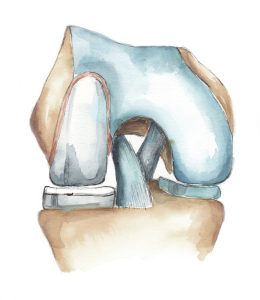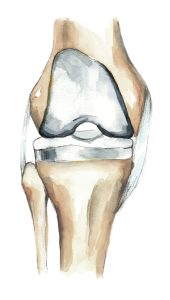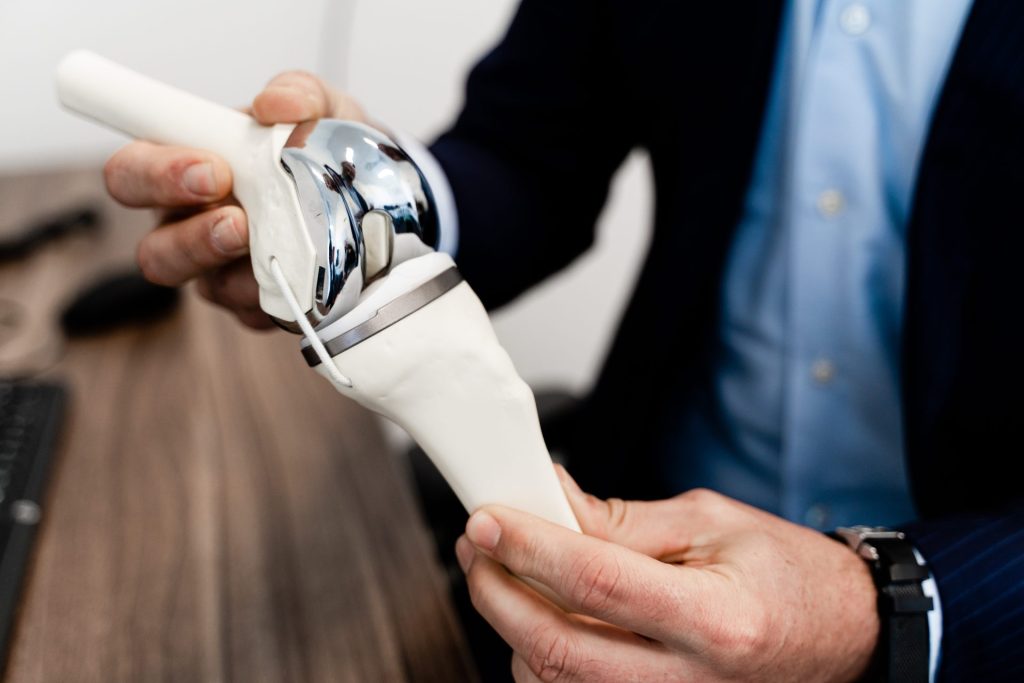Both partial and total knee replacements are popular surgical options for treating arthritis and other knee conditions. Over 1,500 people in South Australia undergo a knee replacement each year.
While total knee replacement is most common, partial knee replacement can also lend great improvement to a recipient’s quality of life for certain situations. An Orthopaedics SA surgeon can determine your suitability for each approach by assessing your knee’s condition.
Partial and total knee replacements: what’s the difference?
A total knee replacement surgery replaces all surfaces of the knee joint. It is a fairly major surgery, although it is one of the most successful in all of orthopaedics and medicine as a whole.
Partial or unicompartmental knee replacements, on the other hand, replace only part of the knee. The knee joint’s healthy surface is left intact and works together with a specialised, smaller implant to restore pain-free movement.
Other technology is often combined with either type of knee replacement to deliver better results. This includes computer guidance technology and robotic-assisted surgery to align and position the implant as accurately as possible, which can improve the implant’s life and your physical ability after recovery. Many surgeons at Orthopaedics SA have undergone additional training to provide these services.
When would I need one or the other?
There are three main parts to the knee: the medial compartment (the side closest to your other knee) and the lateral compartment (the outer side), and the patella (kneecap). All of these parts can be affected by arthritis, although sometimes only one part is affected at once.
Total knee replacement is usually recommended if arthritis is present in both the medial and lateral compartments of the knee. It replaces both parts in a single surgery.
On the other hand, a partial knee replacement may be recommended if arthritis is localised to one or two parts of the knee. It is most often used to replace the medial compartment only, though it sometimes may be performed to replace the lateral compartment or kneecap instead.
Are partial or total knee replacements better?
As with most procedures, the best option for you can vary depending on your own health and condition.
Unicompartmental knee replacements involve a less extensive surgery. They can sometimes be performed with a minimally invasive approach, encouraging smaller scars and faster healing in some cases. Patients who undergo a partial knee replacement are also still candidates for a total knee replacement if needed in the future. A partial knee replacement may be best for you if your arthritis is localised to one part of your knee.

Total knee replacement is a more extensive surgery and involves replacing more of the knee’s natural surface. A total knee replacement may be recommended if arthritis involves more than one part of the knee joint. It may also be recommended if you have a significant ligament instability or a deformity caused by long-term arthritis, since these can’t be corrected with a partial knee replacement.

Both approaches have a very high success rate and most patients report marked improvements to their pain levels and lifestyle. Unicompartmental knee replacement patients report less stiffness than total knee replacement patients and often have a better range of motion and overall knee function, though some studies have shown that total knee replacements generally last longer and have lower revision rates.
How will a knee replacement help me?
Both partial and total knee replacements remove the damaged part of the knee joint and replace it with a prosthetic part. This allows the joint’s surfaces to glide smoothly again, reducing irritation and pain.
However, it is important to remember that your knee will not be exactly the same as it was before. While you will likely be able to walk comfortably, you may have some aches or find stairs/kneeling uncomfortable. You may not regain a greater range of movement and will not be able to run.
The goal of knee replacement is to reduce your overall pain and let you carry out day-to-day activities again. While you shouldn’t expect a perfect knee after total or partial knee replacement, you can expect improved quality of life.

How do I know which approach is right for me?
Your orthopaedic surgeon will determine whether a partial or total knee replacement is best for you after a thorough clinical assessment. This includes conducting a physical examination and taking x-rays or other scans to determine the extent of damage to your knee. The surgeon will also ask questions about your medical history and overall health.
If they believe knee replacement is the best treatment for you, your orthopaedic surgeon will recommend a partial or total replacement option and explain the pros and cons of each approach. The doctor will never proceed with any kind of treatment or surgery without your full understanding and consent.
